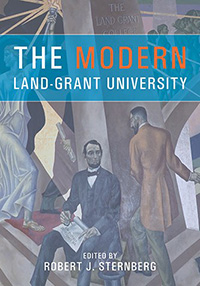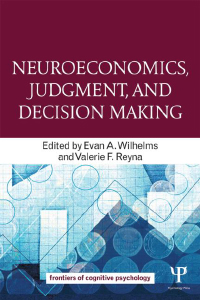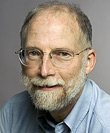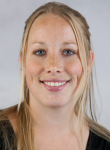 |
Study cracks brain’s emotional code The human brain turns feelings them into a standard code that objectively represents emotions across different senses, situations and even people, reports a new study by Cornell neuroscientist Adam Anderson. |
 |
Book lauds land-grant university model The land-grant university, 150 years after its inception, remains an extraordinary and compelling model for higher education, with ideas and ideals relevant to even the most elite academies, contends Robert Sternberg in “The Modern Land-Grant University.” |
 |
Book examines hows and whys of economic choices Drawing on perspectives from the early roots of psychology through the latest neuroscience, the new volume edited by Valerie Reyna and graduate student Evan Wilhelms introduces what we know about how and why people make decisions with economic consequences. |
 |
Poor neighborhoods – not poor parents – pack on pounds By age 2, poor children have gained more weight than those who are better off. But after age 2, neighborhood poverty, not family poverty, is linked to weight gain, finds a new study by Gary Evans. |
 |
Girls’ perceptions drive sexual behavior Jane Mendle’s latest research suggests that genetic factors related to how sexually mature a girl thinks she is influence her sexual behavior, above and beyond her actual physical development. |
| Online avatar helps demystify breast cancer risk Valerie Reyna and colleagues developed a computer-based system using artificial intelligence designed to mimic one-on-one human tutoring to help women understand breast cancer genetics. |
|
 |
Kids’ earliest memories might be earlier than they think The very earliest childhood memories might begin even earlier than anyone realized – including the rememberer, his or her parents and memory researchers, according to new research by Qi Wang. |
 |
Survey: ‘Mostly heterosexuals’ have more health problems The largest minority on the sexual-orientation spectrum – the mostly heterosexuals, estimated at around 7 percent of the general adult population – report more health problems than heterosexuals and somewhat fewer than bisexuals finds a review by Ritch Savin-Williams. |
 |
Institute for the Social Sciences grants awards Nathan Spreng is among those who received research awards from the Insititute for the Social Sciences in the Fall of 2013 for research on Brain Network Dynamics. |
Students in the News
 |
Win or lose, this computer game teaches biology Andrew Jefferson, a graduate student in the field of human development, is spearheading development of video games to teach young people about science. |
 |
Undergrads convey their research prowess at forums More than 20 of the students presenting at the Cornell Undergraduate Research Forum were HD majors or worked with a professor in the department. |
More Stories
Experts offer new findings on youth at research update
Service-learning event honors student, faculty projects
Workshop offers roadmap to link research, practice
Moving beyond IQ
Expressions of fear and disgust aided human survival, study says
The aging brain network
Love is a story
New Resources
| Embryos, stem cells, human meaning and policy | |
| Media Literacy |








